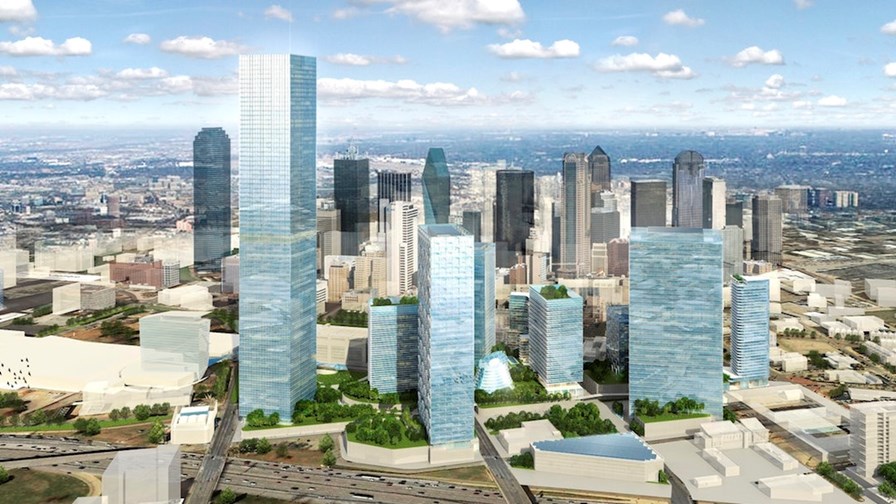
via Flickr © skys the limit2 (CC BY 2.0)
- 66 per cent have a strategy for implementation
- 42 per cent of those are thinking of using drones
- 600 smart cities around the world will produce 60 per cent of global GDP by 2025
- Smart city market segment forecast to be worth US$400 billion by 2020s
A new report from the National League of Cities (NLC) in the US shows that two-thirds of US conurbations are now investing in smart city technology and a quarter of those currently without a smart city strategy or system are examining ways to implement them. Of those towns that have invested in smart technologies the top ranking applications and services are smart meters for utilities, intelligent traffic lights and other road traffic systems, e-governance, Wi-Fi kiosks and RFID sensors on pavements and on kerbs.
Interestingly (and perhaps worryingly in certain circumstances) 42 per cent of respondents to the NLC's survey say they are looking closely at the use of drones for municipal operations such as aerial photography, marketing, mapmaking, the recording of "special events", the surveying of economic and land development prospects and "public safety". It seems that US cities are continuing to blur the line between what is public and what is private and if public events and special occasions are routinely to be recorded by drones than Big Brother really will be watching you. Drones are immensely useful but its uses will have to be carefully circumscribed by law if the technology is not to be put to uses that would effect an individual rights and privacy. As we know all too well, the road to hell is paved with good intentions.
The National League of Cities was founded way back in 1924 by ten state municipal bodies who saw the need for a nationwide organisation to strengthen local government in the US by co-operation, advocacy and lobbying. In 1947 the National League was opened up its membership to individual cities with a population of over 100,000 and in 1971 relaxed membership requirements again so that the League currently comprises 1900 cities and big towns. It is a big and important force in local government in the US and its goal is to influence and impact federal policies - including technologies. Not for nothing is the NLC headquartered in Washington DC.
A recent McKinsey report forecast that the smart city sector will be based initially on a core of 600 cities worldwide and will be a US$400 billion market by 2020. It is expected that the core cities will generate 60 per gent of global GDP by 2025. There is no single definition of what constitutes a smart city but it is generally agreed that the central components include IoT devices, sensors, actuators and networking technologies to connect a city and make it "smart". Furthermore the impact of that technological smartness touches every aspect of a city's infrastructures, systems and citizens.
Six key technologies to make a city smart
Another report, this time from TechRepublic, concludes that there are six key technologies that are necessary to make a smart city work. They are Smart Energy, Smart Transportation, Smart Data, Smart Infrastructure, Smart Mobility and Smart IOT Devices.
Smart energy involves the more efficient use of less energy in public, commercial and residential buildings. This includes smart grids and smart lighting as well as solar power and other green technologies. As far as smart transportation is concerned a smart city supports a multiplicity of types of transport types and technologies and bolsters them with necessary adjuncts such as smart traffic monitoring, smart signalling and smart parking to help reduce congestion and pollution. A smart city will greatly reduce vehicular traffic whilst allowing people and goods to move easily by various means of transportation. Self-driving and autonomous vehicles are central to any smart city strategy.
Smart cities generate a massive and close to exponential amount of data which must be analysed and acted upon in as close to real-time as is possible. Some cities, in the US in the US and elsewhere have decided to open-up data portals and publish city data online in the cause of transparency and to allow various interest groups to use predictive analysis to make the city ever smarter.
With smart infrastructure in place, smart cities will have the data at hand be able to plan better and more quickly anticipate and thus meet future demands. Meanwhile, smart mobility (which refers both to smart and interoperable technologies and the data that travels across them) confers the ability to move, seamlessly, into and out of a multiplicity of municipal and private systems where data is unconstrained and can move freely but where all due attention is paid to intellectual property rights, confidentiality and security. This will require the close alignment of public policy legal safeguards. That is difficult and will take time.
Last, but by no means least, says the TechRepublic report, is the Internet of Things, the components and devices that tie everything together in a smart city. The amalgamation of data from millions and then billions and eventually even trillions of sensors, its integration with third party social networks and its free exchange between interested parties and organisations is essential in turning a city into a smart city. But all this is predicated on the availability and efficiency of sufficient bandwidth and networks resilient enough to withstand and manage the outages and faults that will inevitably occur from time to time.
Email Newsletters
Sign up to receive TelecomTV's top news and videos, plus exclusive subscriber-only content direct to your inbox.




